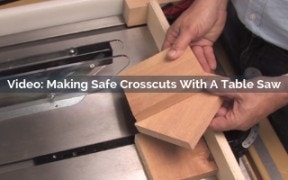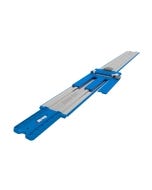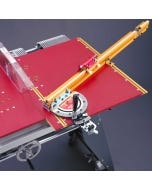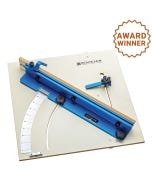Video: Making Safe Crosscuts With A Table Saw

How to make repeatable cuts on your table saw. A sacrificial fence is a replaceable fence that is attached to your miter gauge. The sacrificial fence provides additional support behind the work piece and prevents splintering on the back side of the cut. A stand-off block is a spacer that is attached to the guide fence. The stand-off block is used to register the work piece to make the same length crosscut with each pass. The stand-off block keep the work piece away from the fence during the cut, preventing any chance of binding or kick back.
Skill Builder Video
Making Safe Crosscuts With A Table Saw - Video Transcript
Speaker 1: A crosscut means cutting across the woods grain. A table saw us up to the task. However, the safest way to do it is with the use of a miter sled also called a miter gauge. So check this out. The sled provides a stable backing for the workpiece, and it travels in one of two predetermined slots that are built into the table, but because those are fixed slots, it would appear as though there are some limitations with the width that you can cut.
Speaker 2: That's right, and that's where we get creative with jigs and things like sacrificial fences. Sacrificial fences need to be flat, so they're either made of MDF, or plywood, or even melamine. You secure it to the sled with screws. Standoff block is a spacer that lets you safely and accurately cut short pieces. Used together, they enable you to make repeatable crosscuts without binding against the fence.
Speaker 1: The sled sacrificial fence, which is taking the hits, by the way, and the standoff lock work as a system. You need to do the math and calculating the width of that standoff block to make sure your cuts are where you want them. Check it out. One, two, three. Sacrificial bents helps you fly through these cuts.
Keep the inspiration coming!
Subscribe to our newsletter for more woodworking tips and tricks



